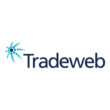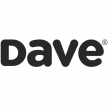Buy-side builds confidence as home-brew smart order routers gain ground

Delegates at TradeTech Paris debated the role of the buy-side
Buy-side firms stand to gain from developing their own smart order routers and carrying out their own capital markets research. But the growing independence of the buy-side must still be weighed against sell-side advantages of scale, according to speakers at the TradeTech conference in Paris on Tuesday.
Some buy-side firms have been experimenting with technology such as home built smart order routers for a few years – one of the pioneers was Finland’s Simo Puhakka at Pohjola Asset Management. But it is only more recently that the idea has gained in popularity. Much of the driving power for the concept comes from greater awareness on the buy-side of the costs of trading, while at the same time the cost of the technology has come down. Pressure to provide better returns has also played a part, as has suspicion of the sell-side.
“We built our own smart order router because it is preferable to have control and to better be able to measure the performance of our algos relative to others,” said Julien Kockelkoren, head of execution at Capital Fund Management, France. “A good smart order router will reduce your slippage and give you lower costs.”
The emancipation of the buy-side is also tied to unbundling of execution and research, which has gained pace in recent years through a combination of macroeconomic pressure and regulatory change. The rise of execution-only brokers, and research-only houses, has been part of the trend towards more specialisation and greater transparency over costs. Inevitably, some asset managers are now determined to do their own research, too.
“We think in the long run it is better to do your own research because you will understand the market microstructure better when you do that,” said Kockelkoren. “We acknowledge that the sell-side has its advantages; they know the market rebates and the more you trade the cheaper it gets. They have larger volumes, so there is some advantage there but all in all we believe it is a value-add for us to do our own research.”
Other speakers highlighted the importance of the buy-side taking greater responsibility for its own execution – a principle which is increasingly being put into law in some jurisdictions, notably Hong Kong, where an asset manager is required to demonstrate to the regulator its ability to achieve best execution. The UK’s FCA is understood to be considering the introduction of a similar requirement.
For David Berney, trading and execution specialist at Ergo Consultancy, the key question is the logic behind the smart order router – and specifically, the algorithm that decides how the parent order will be handled and where any child orders will be directed.
“There are routers that send 100% of an order to the first market to be executed,” he said. “That’s not particularly smart, but it does exist. The buy-side should look at the toxicity of venues, which comes down to the liquidity that can be achieved in a venue versus the information leakage once the firm begins to trade there. Inevitably there is a trade off – if you want ultimate speed, then you may have to accept some information leakage and trade on a relatively more toxic venue. If you are long-only, then you may have to wait longer but you are aiming for less information leakage.”
Victor Lebreton, principal at Quant Hedge, added that the best approach is to ensure regular reviews of both algos and smart order routers. For example, his firmn uses three members of staff to review the algos, and prioritises standardising the data sources so that they are better able to understand the timing of trade execution, the logic of the decisions that were made and the rationale for the division of child orders, as well as the number of shares and the triggers that were active in the market.











































